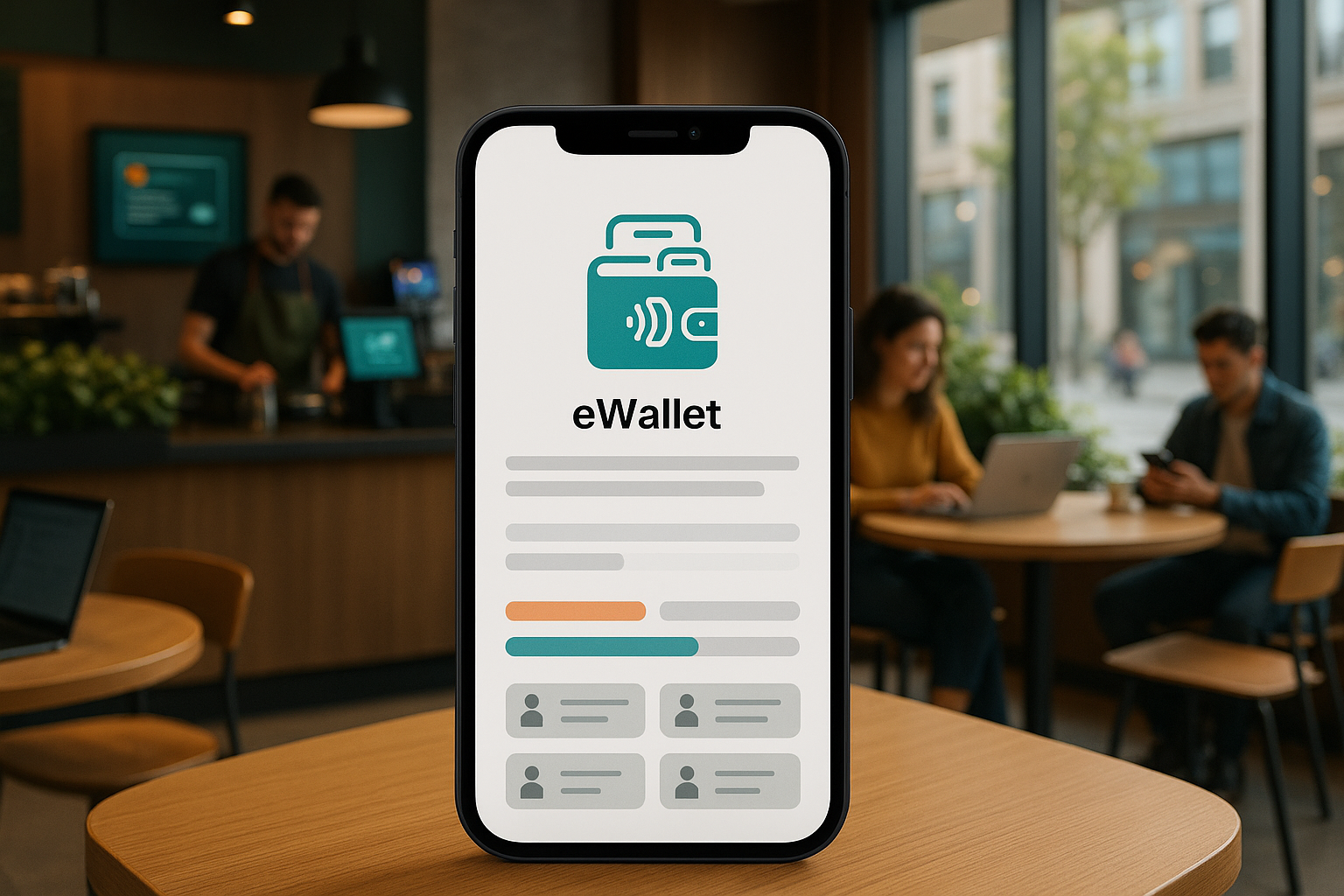Introduction
In today’s digital-first economy, the convenience of mobile payments is no longer a luxury but an expectation. Businesses looking to streamline transactions, enhance customer loyalty, and open new revenue streams are increasingly turning to eWallet applications. However, the path to launching a successful eWallet is fraught with complexity. From navigating stringent security protocols and ensuring regulatory compliance to managing exorbitant development costs and complex integrations, building an eWallet app is a formidable challenge. Many companies underestimate the technical depth required, leading to budget overruns, security vulnerabilities, and a subpar user experience.
This comprehensive guide will walk you through the essential aspects of eWallet app development. We will explore the intricacies of building an eWallet, the reasons why in-house development can be a costly misstep, the different types of eWallets you can build, and a detailed breakdown of the associated costs. Furthermore, we will examine the challenges of integrating payment gateways and introduce you to top development companies that can bring your vision to life.
As a leading US AI-powered app development firm, we at MetaCTO have helped countless businesses build, grow, and monetize their mobile applications. We understand the nuances of fintech development and specialize in integrating secure, scalable eWallet solutions into new and existing apps. This article will provide the clarity you need to embark on your eWallet development journey with confidence.
What is an eWallet App?
An electronic wallet, or eWallet, is a software-based system that securely stores users’ payment information and passwords for numerous payment methods and websites. By using an eWallet, users can complete purchases quickly and securely with a nearby physical terminal or online. It functions as a digital version of a physical wallet, allowing individuals to make electronic transactions, store funds, track payment history, and more, all from a mobile device.
The core function of an eWallet is to eliminate the need to carry physical cards or cash. Instead, a user’s bank account, credit card, or debit card information is linked to the digital wallet. This stored information is encrypted and protected, making it a secure alternative for transactions. Beyond simple payments, modern eWallets have evolved to include features like peer-to-peer transfers, bill splitting, loyalty program integration, and even cryptocurrency support.
Reasons It Is Difficult to Develop an eWallet App In-House
While the idea of having a dedicated in-house team to build and maintain your eWallet app may seem appealing, it often proves to be an impractical and financially draining endeavor. The complexities of fintech application development extend far beyond standard app creation, introducing unique challenges that many businesses are unprepared to handle.
The primary obstacle is cost. Assembling an in-house team of developers with the specialized skills required for eWallet security, maintenance, and regular updates is significantly more expensive than partnering with an external development company. The fact is, the total cost associated with an in-house team easily outweighs its various benefits. This isn’t just about salaries; it includes recruitment costs, benefits, office space, hardware, and ongoing training to keep up with evolving security threats and technologies.
Consider the developer rates. An in-house senior developer in the United States can command an hourly rate of $80 to $100+, while a lead architect can cost over $150 per hour. When you factor in the entire team needed—project managers, UI/UX designers, backend developers, quality assurance engineers—the costs quickly spiral. In contrast, outsourcing fintech development to an experienced agency can dramatically reduce the overall cost without sacrificing quality. IT staff augmentation offers an even more affordable alternative to hiring full-time developers.
Furthermore, security compliance is a non-negotiable, continuous process. eWallet apps handle sensitive financial data, making them prime targets for cyberattacks. Regular updates and maintenance are critical for patching vulnerabilities. An in-house team must be perpetually vigilant, a commitment that demands significant and ongoing investment. If e-wallet app security is not implemented correctly from the start, it can lead to catastrophic data breaches and substantially higher costs to fix vulnerabilities later. For these reasons, partnering with a firm that has a proven track record in secure fintech development is the more prudent and cost-effective strategy.
Different Types of eWallet Apps
eWallet applications are not a one-size-fits-all solution. They can be categorized into three main types based on their functionality and the scope of transactions they permit: closed, semi-closed, and open wallets. Understanding these distinctions is crucial for determining which model best aligns with your business goals.
Closed Wallets
A closed wallet is developed by a company that sells products or services directly to its customers. Users can store funds in this type of wallet, but these funds can only be used to make transactions with the specific company that issued the wallet. You cannot use a closed wallet to pay at other businesses or to withdraw cash.
This model is excellent for building customer loyalty and streamlining the transaction process within a specific ecosystem. A common use case for closed wallets is managing money from cancellations, returns, or refunds, which are stored in the wallet for future purchases with the same company.
A prime example of a closed wallet is Amazon Pay, where users can load money into their wallet to make purchases exclusively on the Amazon platform.
Semi-Closed Wallets
A semi-closed wallet offers more flexibility than a closed wallet. It allows users to make transactions at a list of approved merchants and locations, both online and offline. While the coverage area is restricted to businesses that have a specific agreement or contract with the wallet issuer, it provides users with a broader range of purchasing options.
However, users of a semi-closed wallet cannot withdraw cash or transfer funds to a bank account. This model is popular among retail chains, shopping malls, and online marketplaces that want to create a unified payment system across multiple affiliated vendors. Merchants must enter into a formal contract with the issuer to accept payments from these wallets, ensuring a controlled and secure payment network.
Open Wallets
Open wallets offer the most extensive range of functionalities and are typically issued by banks or financial institutions partnered with banks. An open wallet includes all the transaction capabilities of a semi-closed wallet, allowing users to make payments at any merchant that accepts digital payments.
The key differentiators of an open wallet are the abilities it grants the user beyond simple purchases. Users with an open wallet can:
- Withdraw funds from ATMs.
- Access funds from their associated bank accounts.
- Transfer funds to other users or bank accounts.
This type of wallet essentially functions as a full-fledged substitute for a debit or credit card, providing maximum financial flexibility.
Cost Estimate for Developing an eWallet App
The cost to develop an eWallet application is not a fixed number; it is influenced by a wide array of factors. The average cost can range anywhere from $15,000 for a basic app to over $100,000 for a highly complex solution. App complexity is the single largest factor affecting the final price. The more sophisticated the features and design, the more development work is required, which directly increases the cost.
Let’s break down the costs based on the key variables involved.
Cost by App Complexity
The level of complexity determines the baseline cost of your eWallet app.
- A simple eWallet app with MVP functionality and Basic UI typically costs between $15,000 and $50,000.
- A medium complex eWallet app with sophisticated features and Custom UI will range from $35,000 to $70,000.
- A highly complex eWallet app with high-level advanced features, Bespoke UI, and development for two platforms can cost between $50,000 and $100,000.
Cost by Development Platform
The platform you choose to build on will also have a significant impact on the budget. Developing an app separately for iOS and Android is not a cost-effective option. Employing cross-platform app development can save a large chunk of money as it eliminates the need to rewrite the code for each platform.
| Development Platform | Average Cost Range |
|---|---|
| Web App | $20,000 – $35,000 |
| Cross-Platform App | $30,000 – $50,000 |
| Hybrid App | $25,000 – $75,000 |
| Native App (iOS or Android) | $40,000 – $70,000 |
It’s also worth noting that the cost to develop an Android app is usually higher than for an iOS application due to the need to support a wider variety of devices and screen sizes.
Cost by Features
Features are the building blocks of your app, and each one adds to the development cost. They can be divided into basic (essential for any eWallet) and advanced (for enhancing functionality and user experience).
Basic Features
| Feature | Average Cost Range |
|---|---|
| User Registration | $5,000 – $8,000 |
| User Authentication | $8,000 – $12,000 |
| Wallet Management | $15,000 – $20,000 |
| Transaction History | $8,000 – $12,000 |
| Notifications | $5,000 – $8,000 |
| Security Features | $15,000 – $20,000 |
| Payment Integration | $15,000 – $20,000 |
| Admin Dashboard | $10,000 – $15,000 |
Advanced Features
| Feature | Average Cost Range |
|---|---|
| Peer-to-Peer (P2P) Transfers | $10,000 – $15,000 |
| QR Code Payments | $4,000 – $6,000 |
| NFC Payments | $5,000 – $8,000 |
| Bill Splitting | $8,000 – $12,000 |
| Virtual Cards | $10,000 – $15,000 |
| Loyalty Program Integration | $10,000 – $15,000 |
| Cryptocurrency Support | $12,000 – $18,000 |
| Advanced Security Measures | $10,000 – $15,000 |
| AI Integration | Varies widely based on application |
| UPI Functionality Integration | Around $4,000 |
Cost by Development Team
Your choice of a development team is a critical cost driver. As discussed earlier, an in-house team is the most expensive option.
| Development Team Model | Cost Effectiveness |
|---|---|
| In-House Team | Most Expensive |
| Staff Augmentation | Cheaper than hiring developers |
| Outsourcing | Reduces overall development cost |
Developer hourly rates vary dramatically by location and experience, further influencing the total cost.
Developer Hourly Rates Comparison (Senior Developer)
| Location | Hourly Rate |
|---|---|
| United States (Onshore) | $80 – $100+ |
| Western Europe (Onshore) | €70 – €90+ |
| Eastern Europe (Offshore) | $30 – $40+ |
| India (Offshore) | $16 – $20+ |
| Southeast Asia (Offshore) | $20 – $35+ |
How to Reduce eWallet Development Costs
While eWallet development can be expensive, there are several strategies to manage and reduce costs effectively:
- Build a Minimum Viable Product (MVP): An MVP includes only the core functionalities needed to solve a primary user problem. Launching an MVP helps you test your business idea, gather user feedback, and attract investors at a very affordable price. Our Rapid MVP Development service can help you launch in 90 days.
- Choose Cross-Platform Development: Building a single app that works on both iOS and Android saves significant time and money.
- Create a Detailed Product Requirement Document (PRD): A clear PRD eliminates ambiguity, reduces errors during development, and prevents costly revisions down the line.
- Prioritize Features: Carefully decide which features are essential for launch and which can be added in later updates. Every additional feature adds to the cost.
- Engage Quality Specialists Early: Involving QA experts from the beginning of the project helps catch issues early, preventing them from becoming expensive problems later.
Top eWallet App Development Companies
Selecting the right development partner is paramount to the success of your eWallet project. An experienced company brings not only technical expertise but also industry insights into security, compliance, and user experience. While many firms offer these services, here are some notable companies in the space, with a focus on why we at MetaCTO stand out as the premier choice.
1. MetaCTO
As a top-tier, US-based AI-powered mobile app development firm, we don’t just build apps; we build businesses. With over 20 years of experience and more than 120 successful projects launched, we specialize in taking ideas from concept to launch and beyond. Our expertise in fintech is not just about writing code—it’s about understanding the market, creating a strategy for monetization, and building a secure, scalable product that users love.
What truly sets us apart is our holistic approach. We partner with you at every step:
- Validate: We help you quickly validate your idea with a 90-day MVP to test the market and secure funding.
- Build: Our expert team handles the entire process, from UI/UX design to a market-ready launch, ensuring a seamless experience.
- Grow & Monetize: We use data-driven strategies like A/B testing and analytics to grow your user base and implement effective monetization strategies, turning your app into a profitable venture.
- Evolve: We ensure your app scales with your business, integrating the latest technologies like AI to keep you competitive.
Our 5-star rating on Clutch and a portfolio of successful projects, including the G-Sight training app with computer vision AI and the Bond dating app with AI-driven insights, speak to our commitment to excellence and innovation.
Why Integrating eWallet Functionality is So Hard (And How We Can Help)
Integrating eWallet or payment gateway functionality into a mobile app might seem straightforward, but it is one of the most technically challenging aspects of app development. These integrations are fraught with potential pitfalls that can compromise security, disrupt the user experience, and ultimately harm your business.
The Core Challenges of Payment Gateway Integration
-
Ensuring Transaction Security: This is the paramount concern. You are handling highly sensitive client information, including financial data. This data must be shielded from a constant barrage of potential threats, including sophisticated fraud schemes, cyberattacks, and data breaches. A single lapse can have devastating consequences for your users and your brand’s reputation.
-
Maintaining a Cohesive User Experience (UX): Many off-the-shelf payment gateways have generic, uninspired designs. When shoehorned into a beautifully crafted mobile app, this can create a jarring and disjointed user experience. The payment process should feel like a natural extension of your app, not a clunky, third-party detour that erodes user trust.
-
Complex Technical Integration: The procedure of connecting a payment gateway with your existing mobile app systems can be incredibly difficult. It requires coordinating different API connectors and ensuring seamless communication between your app’s order management systems, shopping carts, and backend databases. Flawed integration can lead to a host of errors, such as failed transactions, inaccurate order data, and endless debugging cycles.
-
Compatibility and International Growth: As your business expands, you must accommodate a wide range of consumer payment preferences. Integrating a gateway that is incompatible with recommended local methods, such as bank transfers, UPI in India, or other regional mobile wallets, creates friction and can lead to lost customers.
-
Performance and Scalability: In fast-paced environments like e-commerce, users expect instantaneous transactions. Sluggish payment processing can lead to cart abandonment. Some gateways are not built to handle a high volume of concurrent transactions and can lag or fail during peak business periods, costing you revenue and user goodwill.
How MetaCTO Solves These Integration Challenges
This is where partnering with an experienced agency like MetaCTO becomes a strategic advantage. Our deep expertise in custom mobile app development and complex integrations allows us to navigate these challenges effectively.
We don’t just plug in a gateway; we architect a comprehensive payment solution. Our process involves:
- Security-First Architecture: We implement robust security protocols, including end-to-end encryption, tokenization, and compliance with standards like PCI DSS, to protect user data from day one.
- Seamless UX Design: Our UI/UX designers ensure the payment flow is intuitive and visually consistent with your app’s branding, creating a trustworthy and frictionless experience.
- Robust Backend Engineering: We build resilient integrations that handle errors gracefully and ensure data integrity between your app and the payment gateway.
- Strategic Gateway Selection: We help you choose the right payment gateway that supports your target markets, scales with your growth, and offers the best performance and fee structure for your business model.
- Ongoing Support: Technical issues are inevitable. We provide the expert technical support needed to diagnose and fix any problems quickly, minimizing downtime and protecting your revenue.
Conclusion
Developing an eWallet application is a significant undertaking that requires deep technical expertise, a steadfast commitment to security, and a clear understanding of the financial landscape. This guide has covered the fundamental aspects you need to consider, from the different types of eWallets and the complexities that make in-house development a risky proposition, to a detailed breakdown of the costs involved and the critical challenges of payment gateway integration.
The journey from a great idea to a successful, secure, and user-friendly eWallet app is complex, but you don’t have to navigate it alone. By partnering with a seasoned development firm, you can avoid common pitfalls, control costs, and accelerate your time to market.
Ready to build a powerful eWallet solution or integrate seamless payment functionality into your existing product? Talk with an eWallet expert at MetaCTO today and let’s turn your vision into a reality.





